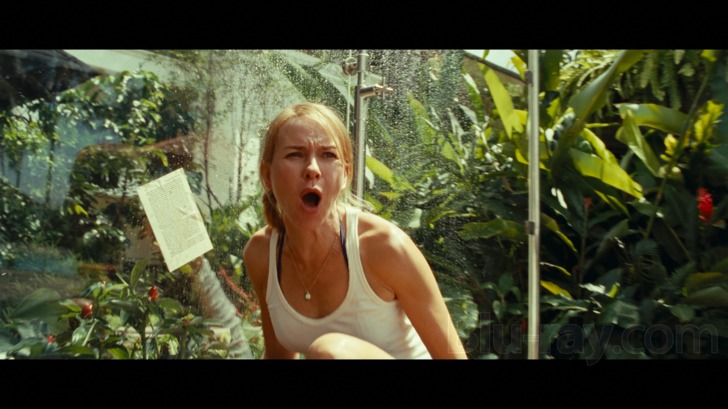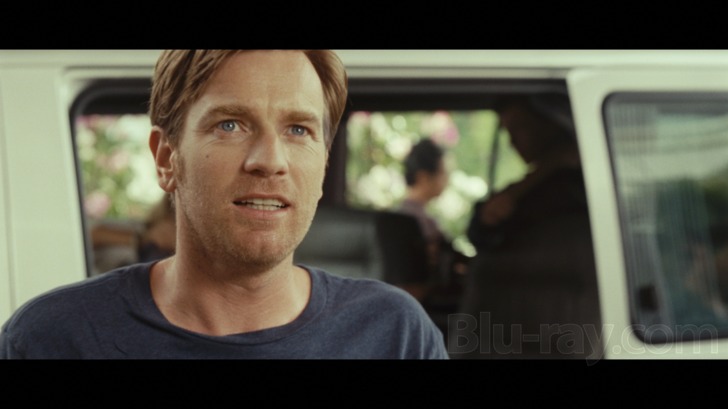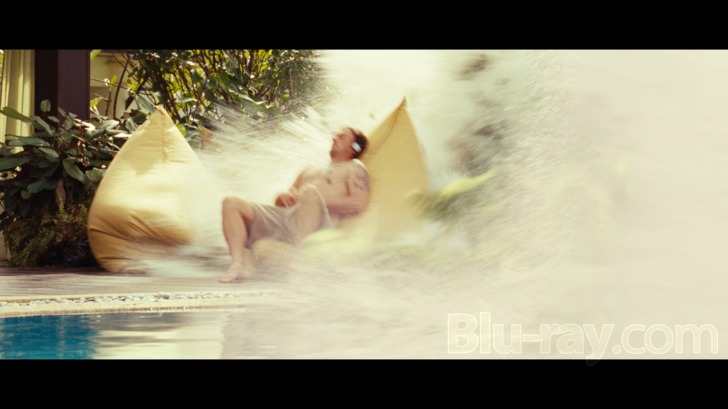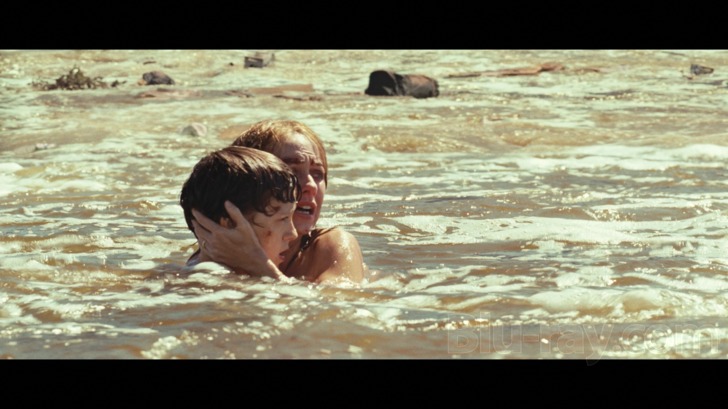The Impossible Blu-ray Movie
HomeThe Impossible Blu-ray Movie 
Blu-ray + UV Digital CopySummit Entertainment | 2012 | 114 min | Rated PG-13 | Apr 23, 2013

Movie rating
7.8 | / 10 |
Blu-ray rating
| Users | 5.0 | |
| Reviewer | 4.5 | |
| Overall | 4.5 |
Overview
The Impossible (2012)
An account of a family caught, with tens of thousands of strangers, in the mayhem of one of the worst natural catastrophes of our time.
Starring: Naomi Watts, Ewan McGregor, Tom Holland (X), Samuel Joslin, Oaklee PendergastDirector: J.A. Bayona
| Biography | Uncertain |
| Melodrama | Uncertain |
| Coming of age | Uncertain |
| Drama | Uncertain |
Specifications
Video
Video codec: MPEG-4 AVC
Video resolution: 1080p
Aspect ratio: 2.35:1
Original aspect ratio: 2.39:1
Audio
English: DTS-HD Master Audio 5.1
Spanish: DTS-HD Master Audio 5.1
Subtitles
English, English SDH, Spanish
Discs
50GB Blu-ray Disc
Single disc (1 BD)
UV digital copy
Packaging
Slipcover in original pressing
Playback
Region A (locked)
Review
Rating summary
| Movie | 4.0 | |
| Video | 4.5 | |
| Audio | 5.0 | |
| Extras | 3.5 | |
| Overall | 4.5 |
The Impossible Blu-ray Movie Review
Reinventing the disaster film.
Reviewed by Jeffrey Kauffman April 13, 2013Most of you probably have your own vacation disaster stories, though truth be told even our worst misadventures
rarely rise to actual "disaster" levels and instead often provide fodder for copious laughter at family reunions and the
like as oft-told anecdotes are recounted, usually in an overly dramatic manner that only adds to the humor. Often
these anecdotes deal with such typical travelers' headaches as missing a flight or ending up with no baggage at the
vacation spot. My own personal favorite comes from my childhood, when my
father, who was President of the Salt Lake City Lions Club for a year, bundled our family up and drove us to Los
Angeles for a couple of weeks
for what was planned to be some Lions Club Convention festivities combined with a trip to Disneyland.
The Lions Club had arranged for a deal in what was supposed to be a tony downtown hotel, but when we arrived, we
were greeted with a pretty decrepit looking building. My parents’ suspicions grew when the baggage clerk, who spoke
no English, managed to close his tie in our car’s trunk after having gotten our luggage, and was briefly pulled behind
the car as it was being driven off by the valet. When we got inside the hotel, first impressions only became more dour
as we
were greeted by an elderly man and his dog, whom he informed us was named Earl, and who he insisted knew how to
talk. “Speak, Earl!”, the man repeatedly exclaimed, with Earl gazing elsewhere, perhaps looking for the nearest exit.
When we got on the elevator, we discovered that unlike most elevators, this one would instantly stop going to its
original
destination to
respond to a new call. And so our trip to our room was a roller coaster affair where we went up a floor, down two
floors, and so on and so on until we finally got to our floor.
The room itself was of course a horror story of its own. I won't belabor this story much longer, only stating that among
the "delights" that occurred was the front of a chest of drawers ripping off in my mother's hand when she attempted to
put some clothes away and, later, our shocking discovery of bloody Kleenex wadded up in a roll away bed that had
been
delivered to the room as well as our interaction with several other bizarre people who apparently lived in the hotel,
including an elderly woman who sat outside all day on a folded chair, moving it slightly every few minutes to stay in a
little sliver of shade that meandered down the sidewalk as the afternoon encroached. Suffice it to say we
beat a hasty retreat and ended up staying in a really nice place on Huntington Beach, though in a cautionary
tale that even a relative paradise can have its share of tribulations, a girl from a neighboring room who had befriended
my sisters was hit by a car when she tried to run across Highway 101 one night (she survived, but with a broken leg).
One way or the other, this was a vacation none of us in my family has ever forgotten.
This all may sound pretty trivial, as many of our perceived "travel horror stories" often really are, but some families have
actually encountered real disasters during their vacations. Simple misadventures like the one mentioned above
simply pale in comparison to the real
disaster depicted in The Impossible, an absolutely riveting film based on the real life experiences of a family
which endured the horrendous calamity of the 2004 tsunami that swept over Thailand on the day after Christmas in
2004.

Lots of films start with the imprimatur “Based on a true story”, and I have been repeatedly on record as stating how skeptical one needs to be when reading between the lines of that salient word based (much of my film scholarship career has been built on a decades’ long research effort to debunk fictional elements in the supposedly “true” story of Frances Farmer in the Jessica Lange feature Frances, a summary of which can be found here.) The Impossible seems to intentionally up the ante by letting the words true story linger after the rest of that oft-seen phrase vanishes. But in this case, truth is indeed stranger than fiction, for Maria Belón, a Spanish physician whose life was forever changed on December 26, 2004 when the tsunami hit and whose struggles in the days afterward provided the inspiration for the film, was integrally involved in the shoot, allegedly even choosing Naomi Watts to play her. While there are elements in the film that smack of “dramatization” (especially with regard to some third act developments), most of The Impossible has the visceral intensity of a documentary rather than a dramatic recreation.
We meet the (renamed) Bennett family on their flight into Thailand for what was planned to have been an idyllic Christmas vacation. Maria (Naomi Watts) is a physician who is now a stay at home mom taking care of three boys, Lucas (Tom Holland), a sullen adolescent who retreats into his headphone fueled interior life, and two much younger kids, Tomas (Samuel Joslin) and Simon (Oaklee Pendergast). Maria’s husband is worrywart Henry (Ewan McGregor) who fusses about whether their home alarm was properly set before they left and who later is concerned over a text message he receives that indicates his job may be on the line. All of those concerns ultimately seem pointless, though. The family enjoys a splendid Christmas Eve, sending gorgeous lantern balloons flying up into an improbably starry night sky, and then enjoying a fun Christmas Day with each other. The day after Christmas would seem to be simply a day to kick back and enjoy the incredible scenery, but everything changes as the family, gathered in and around their resort’s pool, is suddenly struck by the monster waves of the tsunami.
The next section of the film follows Maria and Lucas who end up at least within sight of each other as each is pummeled by the incredible ferocity of the water. Maria is horribly wounded when she attempts to get to Lucas at one point, ending up getting speared twice by an errant branch caught underneath the water. Ultimately, though, Maria and Lucas end up in each others’ arms and manage—just barely—to get to a swampy marsh area that is at least not entirely covered by water. They soon hear a small child crying in the distance. Lucas has noticed just how serious his mother’s wounds are and insists they get to a high place quickly before another potential wave hits, but Maria’s professional and maternal instincts take over and she insists that they find the child. He turns out to be a toddler named Daniel, and together the three manage to get themselves up into the branches of one of the few trees that has managed to remain upright in the onslaught.
Maria’s condition worsens rather dramatically, but ultimately some Thai natives rescue them, ultimately getting Maria and Lucas to an insanely overcrowded and understaffed hospital. This section of the film deals with Lucas’ increasing realization that he may be on his own soon, especially since he and Maria assume that Henry and the other boys must certainly have perished. But Maria herself seems to be on her last legs and after having dispatched Lucas to help however he can, she actually disappears and Lucas is left with the strong impression that she has indeed died.
The film takes a sudden left turn at this point, one which is a bit unnerving but was probably unavoidable from a structural standpoint, as we veer over to the story of Henry and the two younger Bennett boys, who have in fact survived. Henry is desperate to figure out if Maria and Lucas have survived, and when a transport is arranged to get everyone up to higher ground in the mountains, he makes the perhaps questionable decision to send the two Bennett tots off unaccompanied as he continues to search for his wife and eldest son.
It’s at this point that The Impossible makes some potential missteps. It’s revealed that Maria has actually been misidentified after surgery and is alive, though only barely. In the meantime, Henry has set out on a quest with another distraught father and husband, poring through death records (and actual dead bodies) and visiting a number of shelters and hospitals. He also discovers that his two youngest sons have been taken to an undisclosed location. It all seems, well, improbable if not actually impossible, and once the entire family ends up within earshot of each other, even as they continually miss seeing each other, some may be wondering just how much based on and how much actual true story are in this particular equation.
The Impossible is graced with some incredibly effective performances. Both Watts and McGregor are pitch perfect and both have real showcases in terms of emotional breakdowns which they play to the hilt. Tom Holland is also superb as Lucas, managing to toe a fine line between understandable hysteria and resolute determination to get his mother through the morass of rotting corpses both inside and outside the hospital. In my not so humble estimation, Holland certainly deserved a Best Supporting Actor Academy Award nomination to match Watts’ for Best Actress, but that particular category was already as crowded in its own way as the hospital at the core of The Impossible. The film is occasionally a bit too showy for its quasi-verité style, including a late “dream” sequence when Maria is anesthetized in anticipation of a surgery to repair her badly damaged leg. But overall director Juan Antonio Bayona crafts an incredibly moving journey of one family making its way through unimaginable horrors. The film is also notable for its depictions of “little” touches of human kindness along the way (though is it mere coincidence that one of the few boors Henry encounters is obviously an American?). Geraldine Chaplin, whose face is a stunning exemplar of how actresses should age gracefully, has a wonderful moment playing an elderly woman who shares some wisdom with Tomas under a starry night where she discusses the impossibility of knowing which stars are still alive and which burned out millennia ago. She calls it a “beautiful mystery”, much as the real life Maria Belón has mentioned the unfathomable questions that arise when some people survive and some people do not when an incredible disaster hits.
The Impossible Blu-ray Movie, Video Quality 

The Impossible is presented on Blu-ray courtesy of Lionsgate Films and Summit Entertainment with an AVC encoded 1080p transfer in 2.35:1. This is an exceptionally sharp looking high definition presentation that is strangely helped by the ferocity of the destruction it depicts. Director Bayona and cinematographer Óscar Faura emphasize the cruel beauty of Thailand after the tsunami, but they also emphasize the lyrical gorgeousness of the location before the destruction hits, making for an at times unsettling dialectic. There is awesome depth of field in many of the exterior shots, while close-ups offer abundant fine object detail (sometimes gruesomely so, as in the glimpse we're given of Maria's gashing leg wound). Colors are very deeply saturated and accurate looking (the film has a refreshing lack of over aggressive color grading, though some scenes have been skewed toward the yellow side of the spectrum).
The Impossible Blu-ray Movie, Audio Quality 

The Impossible features lossless DTS-HD Master Audio 5.1 mixes in both English and Spanish. Both of these tracks offer astounding LFE as well as sterling fidelity and awesome dynamic range. As Bayona mentions in the commentary, a lot of attention was paid to the sound design of this film, and that care comes through immaculately well on both of these lossless offerings. From the first disturbing rumble that begins the film (is it a tsunami or something else entirely?) through the big set piece of the waves crashing ashore to later, more relatively restrained moments, these tracks offer brilliantly immersive qualities that regularly place discrete effects around the soundfield, adding immeasurably to the generally realistic ambience of the film.
The Impossible Blu-ray Movie, Special Features and Extras 

- Audio Commentary with Director J.A. Bayona, Writer Sergio G. Sanchez, Producer Belén Atienza and Maria Belón. This is an unusually excellent commentary which gets into all sorts of technical data without ever being overly technical. It helps to have the real Maria on hand here, as she offers a lot of first person anecdotes of what surviving this calamity was really like. Some of the most interesting aspects deal with how the water scenes were accomplished.
- Casting The Impossible Featurette (1080p; 6:38) focuses on the principal actors in the film.
- Realizing The Impossible Featurette (1080p; 5:54) looks at some of the special effects, quite a few of which were practical.
- Deleted Scenes include:
- Hanging On (1080p; 1:28)
- Granddad's Number (1080p; 1:54)
- Easing the Pain (1080p; 2:23)
- "Where's Everyone Going?" (1080p; 00:47)
- At the Airport (1080p; 2:02). That "Ugly American" makes a reappearance in this scene.
- Theatrical Trailer (1080p; 2:32)
The Impossible Blu-ray Movie, Overall Score and Recommendation 

Far too often disaster films pit a bunch of strangers against some formidable struggle, with really very little emotional attachment required from the audience. In fact, many disaster films play out like virtual lotteries where the audience is asked to guess who will survive and who will perish. Credit The Impossible, then, for dealing with an unimaginable disaster in completely personal, human terms. With standout performances and generally well modulated direction, this is an unusually moving film that should make everyone who watches it aware of just how tenuous life is and how we must value those we love. Highly recommended.
Similar titles
Similar titles you might also like

Churchill
2017

Stronger
2017

The Mercy
2018

Only the Brave
2017

Sully 4K
2016

A Quiet Passion
2016

Wild
2014

Unbroken: Path to Redemption
with Booklet
2018

Fruitvale Station
2013

Papillon
2017

True History of the Kelly Gang
2019

On the Basis of Sex
2018

Breathe
2017

Richard Jewell
2019

Don't Worry, He Won't Get Far on Foot
2018

Pawn Sacrifice
2014

Rosewater
2014

Captain Phillips 4K
2013

The 33
2015

Into the Wild
2007